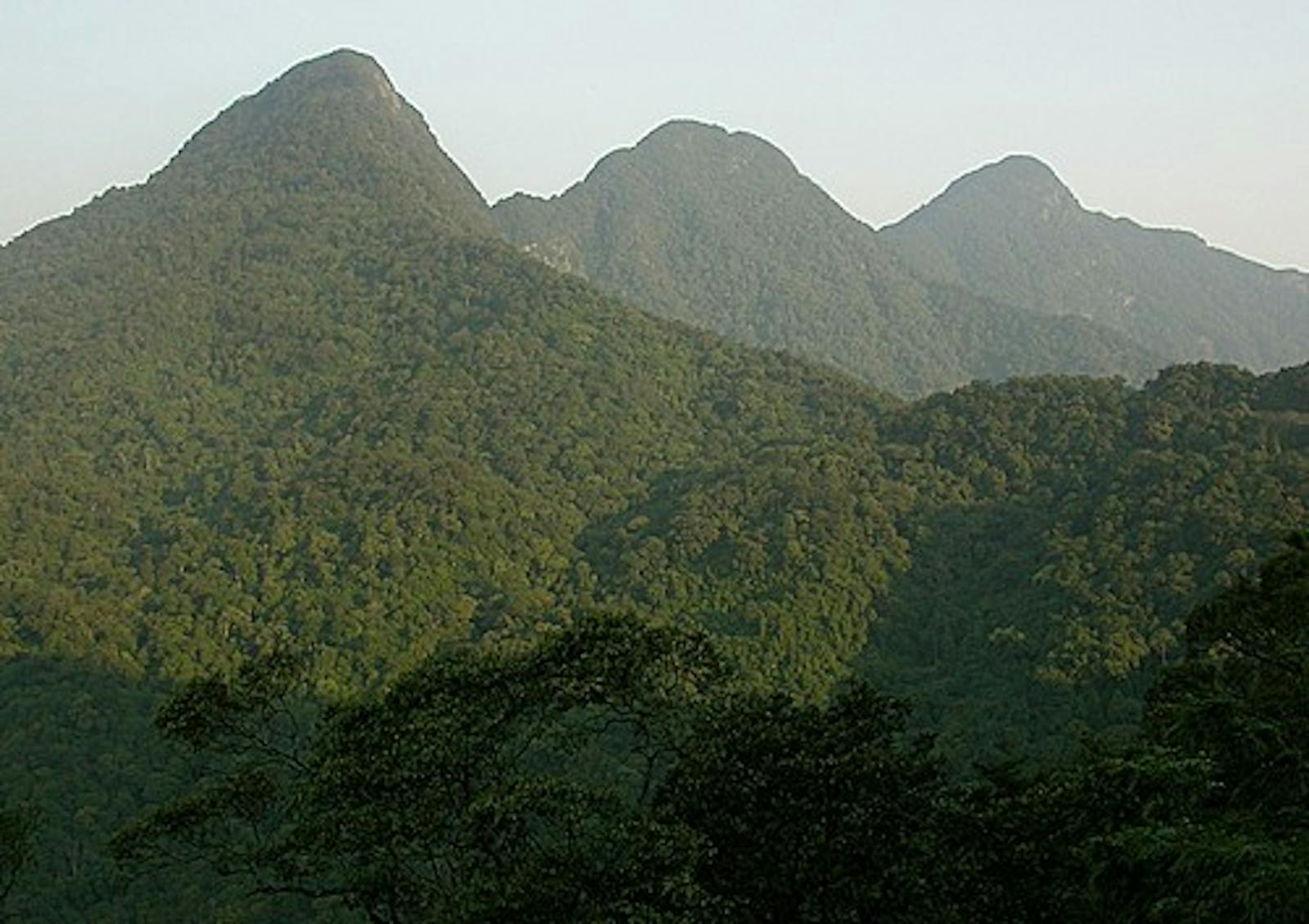South China-Vietnam Subtropical Evergreen Forests
The ecoregion’s land area is provided in units of 1,000 hectares. The conservation target is the Global Safety Net (GSN1) area for the given ecoregion. The protection level indicates the percentage of the GSN goal that is currently protected on a scale of 0-10. N/A means data is not available at this time.
Bioregion: South China Subtropical Evergreen & Monsoon Forests (IM13)
Realm: Indomalaya
Ecoregion Size (1000 ha):
22,480
Ecoregion ID:
268
Conservation Target:
18%
Protection Level:
3
States: China, Vietnam, Hong Kong S.A.R., Macao S.A.R.
The tiger, Asia’s best known and largest predator, is believed to have originated from this general region in China, before expanding its range in all directions to cover a vast area of South and Southeast Asia, the Russian Far East, and the Korean Peninsula, likely 39,000 to 157,000 years ago. Sadly, the tiger has disappeared from its ‘cradle’, a victim to extensive hunting, lack of prey, and habitat loss. The last confirmed sighting of a ‘South China tiger’, considered by some to be a distinct subspecies, was in the early 1970s, and it has not been seen since.
The South China-Vietnam Subtropical Evergreen Forests ecoregion extends from northern Vietnam into southeastern China, and includes Hainan Island. The forests represent a transitional zone from the tropical forests of Vietnam to the subtropical and mixed forests of southern China. The landscape in this area is dramatic, displaying a complex topography of forested mountains incised by a complex system of rivers and streams, lined with riparian forests. The annual rainfall ranges from a low of about 1,800 mm in the south, near the Red River Basin in Vietnam, to over 2,850 mm further north in China. There are no totally dry months, with rainfall occurring throughout the year. In the north, the climate is more seasonal, with cool winters and hot and humid summers.
.jpg)
The flagship species of the South China-Vietnam Subtropical Evergreen Forests ecoregion is the Chinese pangolin. Image credit: Courtesy of Carol Kwok, iNaturalist
This region shows strong floristic relationships with areas to the north in China, and regional endemism is high. But very little pristine forest remains within this ecoregion; most forests have been converted or degraded. Tree dominance is shared by species of Lauraceae, Fagaceae, and Meliaceae, with some of the dominant species being Castanopsis chinensis, Schima superba, Syzygium rehderianum, Aidia canthioides, Cryptocarya concinna, Craibiodendron kwangtungense, Cryptocarya chinensis, Aporosa yunnanensis, Ardisia quinquwgona, and Blastus cochinchinensis. The trees can reach around 30–35 m in height, but the forests that grow on limestone substrates are relatively stunted, reaching about 15–20 m in height.
This ecoregion also boast rich fauna, especially with birds and amphibians. For example, over 450 species of birds can be found in Hong Kong alone, making up one-third of the total bird species recorded in China.
Very few species larger than a deer now survive in these forests, victims to the rampant poaching to supply the high demand for wildlife, and their parts and products for a variety of uses: from food to making alcohol, traditional medicines, trinkets, and adornments. The critically endangered Chinese pangolin, one of the most trafficked mammals in the world, are poached across the ecoregion for their meat and scales—which can fetch USD$600 per kg—and will be the next mammal in the region to go extinct after the tiger if no immediate conservation action is taken. The natural habitat for wildlife has also been converted, fragmented, and degraded by large-scale shifting cultivation, permanent agriculture, logging, various settlements, and urban and peri-urban infrastructure. This ecoregion also includes some of China’s most populated cities, such as Shenzhen.
Thus, the priority conservation interventions are to: 1) address the wildlife poaching and trade at all levels of stakeholders from the poachers to the traders, consumers, and government authorities; 2) engage local communities as conservation stewards to protect forests and wildlife by introducing livelihood incentives and effective awareness programs; and 3) expand and strengthen the protected area system to cover remaining habitats and secondary sites for potential regeneration and restorations.
Citations
1. Li, L., Huang, Z., Ye, W., Cao, H., Wei, S., Wang, Z., Lian, J., Sun, I.F., Ma, K. and He, F., 2009. Spatial distributions of tree species in a subtropical forest of China. Oikos, 118(4), pp.495-502.
2. Wikramanayake, E, E. Dinerstein, et al. 2002. Terrestrial Ecoregions of the Indo-Pacific: A Conservation Assessment. Island Press.
3. Critical Ecosystems Partnership Fund. 2012. Ecosystem Profile. Indo-Burma Biodiversity Hotspot. 2011 Update. https://www.cepf.net/Documents/final.indoburma_indochina.ep.pdf Accessed Dec 2017.



